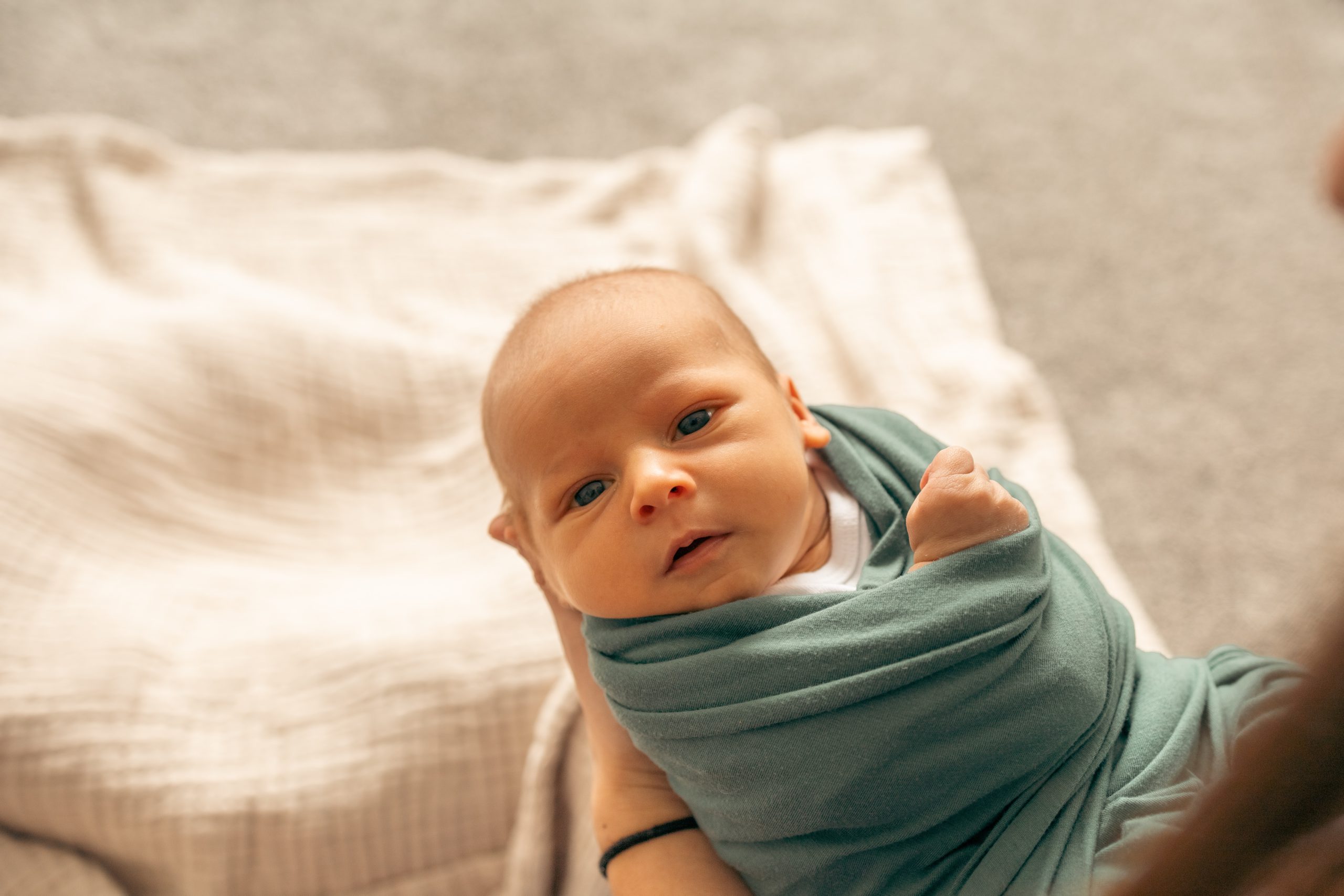
GET STARTED WITH A FREE CUSTOM SCHEDULE AND PLAN OVERVIEW ON OUR MOBILE APP →
TRY BATELLE FOR FREE →

It’s a scene familiar to many new parents: you’re in the hospital, exhausted yet exhilarated, gazing at your precious newborn. A nurse deftly wraps your baby like a burrito in a swaddle blanket, tucking each fold with practiced ease. This is your first introduction to swaddling, a technique presented as an almost magical key to better sleep for your baby – and, by extension, for you. In those early, blurry days of parenthood, any promise of extra sleep feels like a lifeline.
But is swaddling the one-size-fits-all solution it’s often made out to be? While it’s true that many infants find comfort in the snug embrace of a swaddle, this practice isn’t without its drawbacks and isn’t necessarily the right choice for every baby. Read on to answer the question, “Do I need to swaddle my baby?”
Swaddling has roots that stretch back centuries, traditionally used to provide warmth and security. The swaddle is appreciated for its ability to mimic the womb’s coziness, potentially easing a newborn’s transition into the world.
Scientific research supports that swaddled infants generally arouse less and sleep longer. Additionally, preterm infants have shown improved neuromuscular development, less physiologic distress, better motor organization, and more self-regulatory ability when swaddled.
However, swaddling isn’t a long-term solution. Babies need to learn to adjust to their startle reflex (moro reflex), a natural part of their development. Over-reliance on swaddling can delay this process.
Additionally, occupational and physical therapists working with infants emphasize that swaddling might impact a baby’s development. Prolonged swaddling can lead to delays in motor skills like rolling, sitting, and crawling.
These insights from pediatricians and occupational therapists provide a balanced view of swaddling, underlining the need for it to be a temporary and carefully monitored practice. They underscore the importance of prioritizing your baby’s long-term development and safety over short-term comfort and convenience.
Safety is the cornerstone of swaddling, as emphasized by the American Academy of Pediatrics. When swaddling your baby, ensure the swaddle is snug but not overly tight around baby’s chest and hips, which is crucial to prevent risks such as hip dysplasia. This condition can develop when a baby’s legs are straightened and tightly wrapped, hindering proper hip joint formation.
Also, it’s important to monitor for signs of overheating, a potential risk if the swaddle is too constrictive. Always place the top of the swaddle below the shoulders, avoiding any risk of covering your baby’s face, which can increase the risk of SIDS and suffocation. Ensuring proper swaddle technique and vigilance in monitoring your little one will help maintain the balance between comfort and safe sleep.
Additionally, if your little one wriggles free of their swaddle regularly, consider it a cue to stop swaddling rather than seeking tighter options. Ultimately you want your baby to be able to have their arms free so they can potentially find their fingers to suck on—which is a way to self-soothe.
The swaddle should be used as a tool to help your little one adjust from the womb to the outside world. It’s a good idea to consider it a short-term solution and transition away from it between 2-3 months. Babies begin to show signs of rolling around 2-4 months, so it’s best to transition out of the swaddle before that happens.
While there are various methods to transition out of a swaddle, at Batelle, we recommend a gradual process. This involves giving your little one increasingly longer periods of unswaddled time in their sleep space over 3-5 days. However, if your baby can already roll, swaddle use should be discontinued immediately for safety.
Start with 3-5 minutes of unswaddled time on the first night, supporting your baby with soothing strategies like shushing and patting. If needed, swaddle your baby after this time. On the second night, extend the unswaddled time to 7-10 minutes, offering support as needed and swaddling afterward if necessary. By the third night, you can either further increase the time or remove the swaddle altogether and transition to using a sleep sack or wearable blanket, continuing to support your little one to sleep without swaddling. This approach, consistent for both naps and nights, can result in a smoother and quicker transition.
Know that in this transition period, it’s very normal for your baby’s arms to flail during settling. Their arms may also occasionally wake them from sleep. This will subside as they get used to having their arms free.
As you phase out swaddling, be cautious with the alternatives. Market options like padded sleepsuits and weighted sacks, and swaddles with velcro might seem appealing, but simplicity is often your best bet. Not every marketed product is necessary or beneficial.
Moreover, the American Academy of Pediatrics (AAP) advises against the use of any weighted objects, such as weighted blankets, sleepers, or swaddles, near sleeping infants. These weighted sleep products could increase the risk of sudden infant death syndrome (SIDS) by hindering a baby’s ability to arouse in response to hazards like lack of oxygen.
